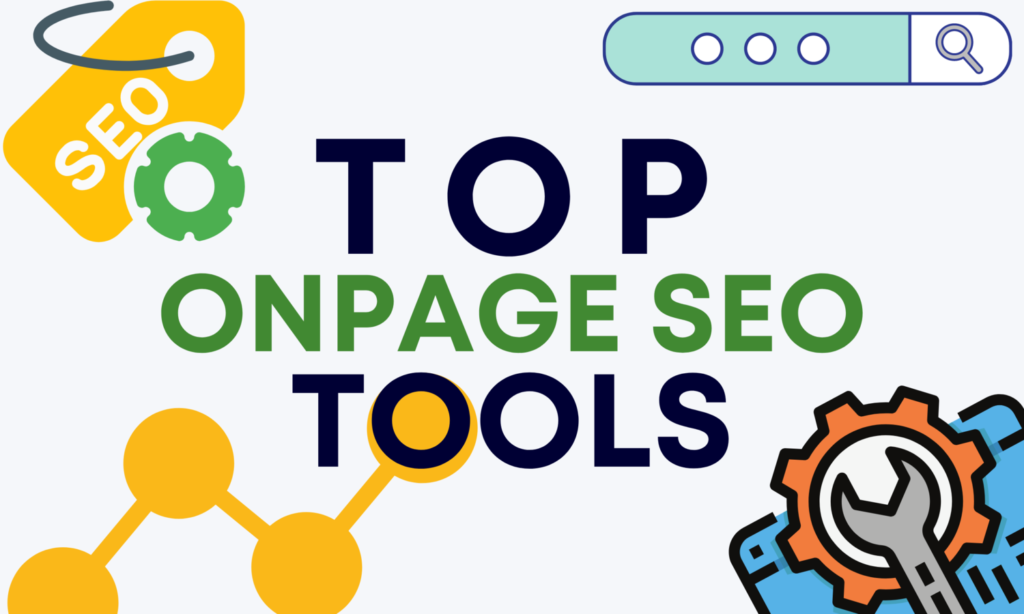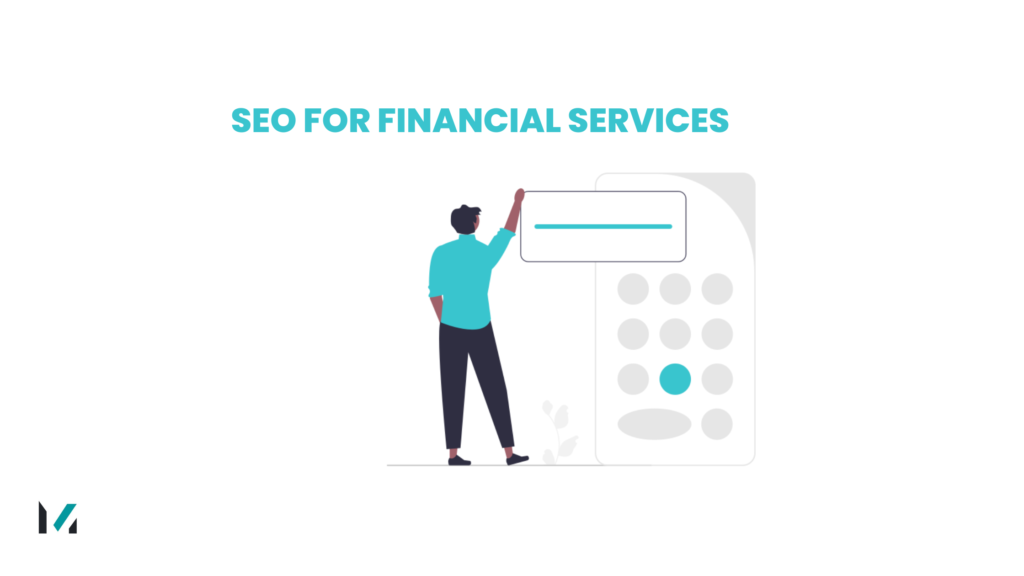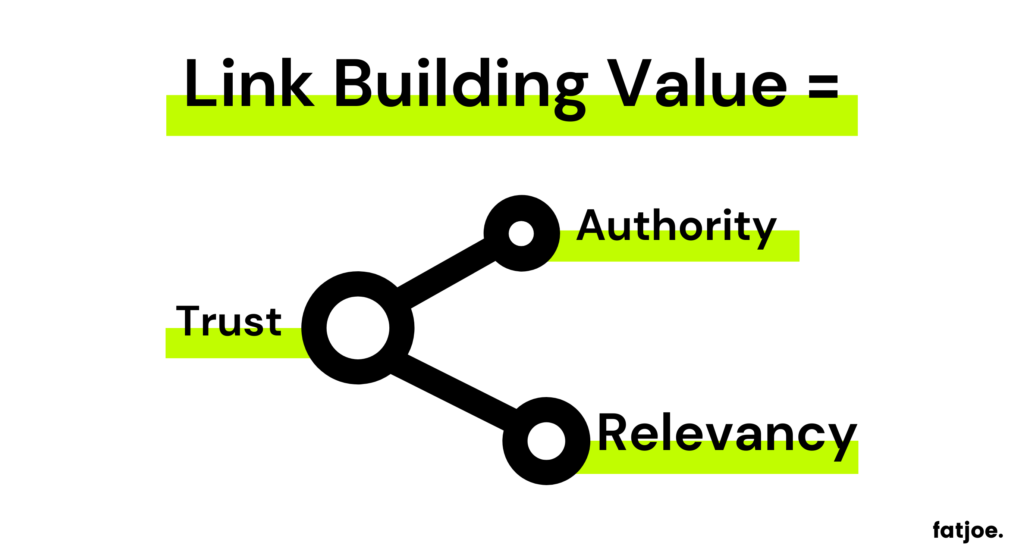Leveraging Artificial Intelligence for Superior SEO Rankings 2023
In the ever-evolving landscape of digital marketing, search engine optimization (SEO) remains a paramount strategy for businesses aiming to enhance their online visibility. The use of artificial intelligence (AI) has emerged as a game-changer in the world of SEO, providing unparalleled opportunities to outrank competitors and secure top positions in Google search results. In this comprehensive guide, we delve deep into the strategies and techniques that leverage AI to achieve better rankings and ultimately drive organic traffic to your website.

Understanding the Power of AI in SEO
Harnessing AI Algorithms for Keyword Research
Keyword research is the foundation of any successful SEO campaign. AI-driven tools and algorithms have revolutionized this process by offering data-driven insights into keyword selection. By analyzing vast datasets, AI can identify long-tail keywords, search intent, and user behavior patterns, enabling SEO professionals to create content that precisely caters to their target audience.
Also Check SEO Tools and Software 2023: The Ultimate Comparison Guide
Content Generation and Optimization
Content quality is a pivotal ranking factor in Google’s algorithm. AI-powered content generation tools, such as GPT-3, have taken content creation to a new level. These systems can produce high-quality, coherent, and engaging content at scale. Furthermore, AI-driven content optimization tools can analyze existing content and suggest improvements to enhance its search engine friendliness.
Implementing AI for On-Page SEO
AI-Powered On-Page Audits
Traditional on-page SEO audits are time-consuming and often prone to human error. AI solutions can automate this process by scanning websites for technical issues, broken links, and mobile-friendliness concerns. These audits provide actionable recommendations for improving website performance and user experience.
Natural Language Processing (NLP) for Content Optimization
AI’s NLP capabilities can be harnessed to optimize content for both users and search engines. By analyzing the semantic context of content, AI can suggest improvements that align with Google’s ever-evolving algorithms. This results in higher rankings and improved click-through rates.

AI-Driven Link Building Strategies
Predictive Link Building
AI algorithms can predict which websites are most likely to link to your content based on historical data and link-building patterns. This enables a more targeted and efficient outreach strategy, increasing the chances of acquiring high-quality backlinks.
Competitor Analysis
AI tools can analyze competitors’ backlink profiles and identify opportunities to replicate their successes. This competitive intelligence allows SEO professionals to stay ahead in the race for top rankings.
Monitoring and Reporting with AI
Real-Time Analytics
AI-powered analytics tools provide real-time insights into website performance and user behavior. This allows for agile decision-making and quick adjustments to SEO strategies to maintain or improve rankings.
Automated Reporting
AI can automate the generation of comprehensive SEO reports, saving time and ensuring accuracy in tracking key performance indicators (KPIs) such as organic traffic, click-through rates, and keyword rankings.

Embracing AI for Local SEO Optimization
Local SEO and AI-Powered Insights
Local SEO is crucial for businesses targeting geographically specific audiences. AI can provide valuable insights into local search trends and user behavior. By understanding what local customers are searching for, you can tailor your content and optimization efforts to meet their needs effectively.
AI-Enhanced User Experience
Personalized Content Recommendations
AI-driven personalization tools analyze user behavior and preferences to recommend relevant content. By delivering personalized experiences, you can increase user engagement and time spent on your site, factors that positively impact search rankings.
Voice Search Optimization
With the rise of voice-activated devices, optimizing for voice search is essential. AI can help identify voice search queries and tailor content to match natural language patterns, ensuring your website is voice-search-friendly.

The Future of AI in SEO
AI-Driven Predictions
Artificial intelligence can make predictions about future SEO trends and algorithm updates. By staying ahead of the curve, you can adapt your SEO strategy to capitalize on emerging opportunities and secure a competitive advantage.
Ethical Considerations
As AI becomes more integrated into SEO, ethical concerns arise, such as data privacy and the responsible use of AI algorithms. It’s crucial for businesses to uphold ethical standards in their AI-powered SEO practices to maintain trust with their audience.
Final Thoughts
In the ever-evolving digital landscape, AI is not merely a tool but a competitive necessity. Leveraging artificial intelligence for SEO can provide your business with a decisive edge in outranking competitors and securing top positions in Google search results. By harnessing AI for keyword research, content optimization, on-page SEO, link building, and local SEO, you can elevate your online presence and drive organic traffic to your website.
Remember that SEO is an ongoing process, and adapting to the dynamic nature of search engines is key to maintaining and improving your rankings. As AI continues to advance, staying informed about the latest developments and ethical considerations will be pivotal in your quest to dominate search engine results pages.
Incorporate AI into your SEO strategy today and watch your website ascend to new heights in the digital realm.
Here are some frequently asked questions (FAQs) related to leveraging artificial intelligence for superior SEO rankings:

Q1: What is the role of artificial intelligence (AI) in SEO?
A1: AI plays a pivotal role in SEO by providing data-driven insights, automating tasks, and optimizing content. It helps businesses improve keyword research, on-page SEO, content generation, link building, and overall website performance.
Q2: How does AI impact keyword research in SEO?
A2: AI-driven tools analyze vast datasets to identify relevant keywords, search intent, and user behavior. This enables SEO professionals to choose the most effective keywords for their content and optimize their strategy accordingly.
Q3: Can AI generate high-quality content for SEO?
A3: Yes, AI, particularly GPT-3, can generate high-quality and coherent content. It’s a valuable tool for scaling content production while maintaining quality. AI can also optimize existing content for better search engine rankings.
Q4: What is content clustering, and how does AI help with it?
A4: Content clustering involves organizing content around a central topic and related subtopics. AI algorithms can identify these subtopics by analyzing user search queries and content trends, helping to create a well-linked content structure that signals expertise to search engines.
Q5: How does AI enhance user intent analysis in SEO?
A5: AI analyzes user behavior to determine the intent behind specific search queries. This insight helps content creators align their content precisely with what users are looking for, improving rankings and user satisfaction.
Q6: What role does AI play in technical SEO?
A6: AI can diagnose technical issues, improve site speed, and optimize websites for mobile-first indexing. It ensures that websites provide a smooth user experience, which is crucial for SEO success.
Q7: How can AI assist with link building in SEO?
A7: AI can automate the identification of link-building opportunities and streamline outreach efforts. It also helps in analyzing the quality of backlinks, ensuring that efforts focus on acquiring high-quality links that positively impact rankings.
Q8: Are there ethical considerations when using AI in SEO?
A8: Yes, ethical considerations include data privacy, responsible AI usage, and transparency. It’s essential for businesses to uphold ethical standards in their AI-powered SEO practices to maintain trust with their audience and comply with regulations.
Q9: How can I stay updated on AI developments in SEO?
A9: To stay informed about AI advancements in SEO, follow industry news, blogs, and attend webinars and conferences. Engaging with SEO communities and subscribing to newsletters from AI and SEO experts can also provide valuable insights.
Q10: Is AI a one-time investment for SEO, or an ongoing strategy?
A10: AI in SEO is an ongoing strategy. The digital landscape and search engine algorithms continually evolve. Staying current with AI developments and adapting your strategy accordingly is crucial to maintaining and improving your rankings over time.
Leveraging Social Signals for SEO Dominance 2023
In the ever-evolving landscape of digital marketing and search engine optimization (SEO), the role of social media in influencing search rankings has become increasingly prominent. In this article, we will delve into the intricacies of harnessing the power of social signals to propel your website to the top of Google’s search results. By understanding the synergy between social media and SEO, you can effectively outrank competitors and solidify your online presence.

Understanding the Relationship Between Social Media and SEO
Keywords and Social Signals
One of the fundamental aspects of SEO is optimizing content for relevant keywords. However, it’s not just about keyword placement within your content; it’s also about how these keywords are perceived by search engines. Social signals, such as likes, shares, and comments on your social media posts, send strong signals to search engines about your content’s relevance and quality.
Also Check Optimizing Financial Services SEO: Achieving Top Rankings 2023
Building a Cohesive Social Media Strategy
To leverage social signals effectively, it’s imperative to have a well-crafted social media strategy in place. This strategy should encompass the following key elements:
1. Content Sharing
Regularly share high-quality, keyword-optimized content from your website on your social media profiles. This not only drives traffic but also encourages social engagement, which, in turn, enhances your SEO efforts.
2. Engage with Your Audience
Actively engage with your followers on social media platforms. Respond to comments, ask questions, and foster discussions related to your niche. Engaged followers are more likely to share your content, leading to increased social signals.
3. Consistency Is Key
Maintain a consistent posting schedule across your social media channels. This consistency helps in building trust with your audience and search engines alike.
Monitoring and Analyzing Social Signals
Regularly monitor the performance of your social media efforts using analytics tools. Track metrics such as likes, shares, comments, and click-through rates. Analyze which content resonates most with your audience and tailor your strategy accordingly.

The Impact of Social Signals on SEO Ranking
Improved Click-Through Rates
When your content receives a high level of social engagement, it often results in improved click-through rates (CTR). Google recognizes that users find your content valuable, thus giving your website a boost in the search rankings.
Enhanced Brand Authority
A strong social media presence enhances your brand’s authority in your industry. This authority is recognized by search engines, contributing to improved rankings.
Quality Backlinks
Engaging content that garners social shares can also attract natural backlinks from authoritative websites. These backlinks are a crucial factor in SEO success.
Strategies for Maximizing Social Signals
Now that we’ve established the importance of social signals in SEO, let’s delve deeper into strategies to maximize their impact on your website’s ranking.

1. Create Shareable Content
To generate social signals, your content must be shareable. Craft informative, engaging, and visually appealing articles, infographics, videos, and other media that resonate with your target audience. Shareability encourages users to distribute your content across their social networks, increasing its visibility.
2. Harness the Power of Hashtags
Utilize relevant and trending hashtags in your social media posts. These tags help categorize your content and make it discoverable by a broader audience. Research popular hashtags within your niche and incorporate them strategically.
3. Collaborate with Influencers
Influencer marketing is a potent tool for boosting social signals. Partner with influencers in your industry to promote your content. Their endorsement can lead to increased shares, likes, and comments, elevating your content’s social visibility.
4. Encourage User-Generated Content
Invite your audience to contribute to your content creation process. User-generated content, such as reviews, testimonials, or user-submitted photos, not only fosters community engagement but also generates valuable social signals.
5. Optimize Social Media Profiles
Ensure your social media profiles are complete and optimized. Use relevant keywords, include a captivating bio, and maintain consistency in branding across all platforms. This professionalism enhances your credibility and encourages users to engage with your content.
6. Timing Matters
Consider the timing of your social media posts. Research when your target audience is most active on different platforms and schedule posts accordingly. Timely posts are more likely to garner immediate engagement.
7. Cross-Promote Across Platforms
Promote your content across various social media platforms to reach a broader audience. Different platforms attract distinct user demographics, so tailoring your content to each platform’s unique characteristics can maximize its impact.
8. Monitor and Adjust
Regularly monitor the performance of your social media campaigns and adjust your strategy based on data insights. Identify which types of content and posting schedules yield the most significant social signals, and refine your approach accordingly.
9. Implement Schema Markup
Implementing schema markup on your website can enhance the appearance of your content in search engine results. Rich snippets can make your listings more appealing and clickable, increasing the chances of users sharing your content on social media.
10. Encourage Engagement
Encourage your followers to engage with your content by posing questions, running polls, and conducting surveys. Engaging posts not only boost social signals but also foster a sense of community around your brand.
Incorporating these strategies into your social media and SEO efforts can significantly impact your website’s rankings. Remember, while social signals are a crucial factor, they work in conjunction with other SEO best practices, such as on-page optimization and link building, to help you outrank your competitors.
Final Thoughts
In the digital age, social signals are more than just likes and shares; they are the keys to unlocking higher search engine rankings. By implementing the strategies outlined in this article, you can harness the full potential of social media to enhance your website’s visibility, credibility, and authority in your niche. Stay committed to building a robust social media presence, engage with your audience, and watch as your website ascends the ranks of Google’s search results, leaving your competitors in the dust.

Frequently Asked Questions (FAQ) About Social Signals and SEO
1. What are social signals in the context of SEO?
Social signals refer to the activity and engagement that your website’s content receives on social media platforms. This includes likes, shares, comments, and other interactions with your content on platforms like Facebook, Twitter, Instagram, and LinkedIn. Search engines consider these signals as indicators of your content’s quality and relevance.
2. How do social signals impact SEO rankings?
Social signals indirectly influence SEO rankings. When your content receives a high volume of social engagement, it tends to lead to increased website traffic and improved click-through rates (CTR). Search engines like Google interpret this as a signal of quality and relevance, which can positively affect your search rankings.
3. Are all social signals created equal?
No, not all social signals carry the same weight. While all forms of engagement, such as likes, shares, and comments, are essential, shares and comments often have a more significant impact on SEO rankings. Shares indicate that your content is valuable enough for users to share with their networks, while comments suggest active engagement and discussions around your content.
4. What platforms should I focus on for social signals?
The choice of social media platforms depends on your target audience and industry. It’s essential to have a presence on platforms where your audience is most active. For instance, if you’re in the B2B sector, LinkedIn may be more valuable, while visually appealing industries might benefit from Instagram or Pinterest.
5. How can I encourage social signals for my content?
Encouraging social signals involves creating shareable content, engaging with your audience, and promoting your content strategically. Craft high-quality content that resonates with your target audience, use relevant hashtags, collaborate with influencers, and actively interact with your followers.
6. Can social signals replace traditional SEO practices?
No, social signals should complement traditional SEO practices rather than replace them. While social signals are crucial, they are just one piece of the SEO puzzle. To achieve the best results, combine social media strategies with on-page optimization, quality link-building, and other SEO techniques.
7. How can I measure the impact of social signals on my SEO?
You can measure the impact of social signals on your SEO by using analytics tools. Track metrics such as website traffic, CTR, keyword rankings, and social engagement. Analyze the correlation between increased social signals and improvements in these metrics to gauge the influence of social media on your SEO efforts.
8. Is it better to have a large following or a highly engaged following on social media?
While a large following can provide a broader reach, a highly engaged following is generally more valuable for SEO. A smaller but engaged audience is more likely to interact with your content, resulting in more meaningful social signals.
9. Are there any risks associated with relying too heavily on social signals for SEO?
Relying solely on social signals for SEO can be risky because they can fluctuate based on trends and algorithm changes on social media platforms. It’s essential to have a well-rounded SEO strategy that includes other factors like high-quality content, backlinks, and technical optimization.
10. How long does it take to see the impact of social signals on SEO rankings?
The impact of social signals on SEO rankings can vary. In some cases, you may see improvements relatively quickly, while in others, it may take time to build a strong social presence and accumulate signals. Consistency and ongoing effort are key to achieving lasting SEO benefits from social media.
These FAQs provide insights into the relationship between social signals and SEO and offer guidance on how to effectively leverage social media to improve your website’s search engine rankings. Remember that SEO is a long-term endeavor, and a holistic approach that considers various ranking factors will yield the best results.
Mastering Blog Content 2023: Quality Over Quantity
In the realm of digital content creation, the age-old debate persists: is it better to prioritize quality or quantity when it comes to blog posts? This question has long vexed content creators and SEO enthusiasts alike. At the core of this dilemma lies the desire to attract and engage readers while appeasing search engine algorithms. In this comprehensive guide, we will delve into the intricacies of finding the perfect balance between quality and quantity in your blog content strategy.

Understanding the Landscape
The SEO Dilemma
In the dynamic world of SEO, achieving high rankings on Google’s search engine results pages (SERPs) is a coveted prize. Many believe that churning out a high volume of content is the key to success. However, the reality is more nuanced. While quantity might help you populate your blog with content, it’s the quality that will truly engage your audience and boost your search rankings.
Also Check Crafting SEO-Friendly URLs 2023
The Role of User Experience
User experience (UX) is a pivotal factor in the quality vs. quantity debate. Google’s algorithms have evolved to prioritize content that provides real value to users. Thus, creating content that resonates with your audience, addresses their needs, and offers actionable insights is paramount.
The Art of Crafting High-Quality Content
In-Depth Research
Before putting pen to paper, or fingers to keyboard, meticulous research is essential. Dive deep into your chosen topic, gather credible sources, and analyze existing content to identify gaps that your blog can fill. This groundwork not only adds substance to your content but also positions you as an authoritative voice in your niche.
Compelling Storytelling
Beyond data and facts, the power of storytelling cannot be underestimated. Engage your readers emotionally by weaving a narrative into your blog posts. Personal anecdotes, case studies, or real-life examples can make your content relatable and memorable.
Comprehensive Coverage
Comprehensiveness is the hallmark of high-quality content. Create comprehensive guides, tutorials, or how-to articles that leave no stone unturned. Address common queries, provide step-by-step instructions, and include relevant visuals to enhance understanding.

Balancing Act: Quality and Quantity
Establish a Consistent Posting Schedule
While quality is non-negotiable, consistency also matters. Develop a content calendar that allows you to maintain a regular posting schedule. This keeps your audience engaged and signals to search engines that your blog is active.
Repurpose and Update
Don’t let quality content languish in obscurity. Periodically revisit and update your evergreen articles. Incorporate new data, insights, and trends to keep your content relevant and appealing to both readers and search engines.
The SEO Connection
Keywords and Optimization
Integrate relevant keywords naturally into your content. Use tools like Google’s Keyword Planner to identify high-impact keywords. Ensure that your meta titles, descriptions, and headers are optimized for search engines.
Mobile Optimization
In an era of mobile browsing, optimizing your content for mobile devices is imperative. Ensure that your blog is responsive and loads quickly on smartphones and tablets.

The Impact of Quality Content
Before we wrap up, let’s delve deeper into the profound impact that high-quality content can have on your online presence.
Building Credibility and Authority
In the vast expanse of the internet, establishing credibility and authority in your niche is no small feat. Quality content plays a pivotal role in this journey. When you consistently produce valuable, insightful, and well-researched content, you become a trusted source of information in your field. This not only fosters loyalty among your existing audience but also attracts new readers and potential customers.
Amplifying Social Engagement
In today’s interconnected world, social media is a powerful platform for sharing content and engaging with your audience. High-quality content is more likely to be shared, liked, and commented on by your followers. This not only amplifies your reach but also sends positive signals to search engines about the relevance and influence of your content.
Reducing Bounce Rates
Bounce rates, the percentage of visitors who leave your site after viewing only one page, can be a critical metric in SEO. High-quality content keeps visitors engaged, encouraging them to explore more pages on your site. Lower bounce rates can improve your site’s search engine rankings, as search engines interpret this as a sign of content relevance and user satisfaction.
Encouraging Backlinks
Quality content often attracts backlinks from other websites in your industry or niche. These inbound links are a powerful signal to search engines that your content is authoritative and valuable. As a result, your blog’s domain authority increases, which can lead to higher rankings on SERPs.
Long-Term Sustainability
Quality content stands the test of time. While the digital landscape is constantly evolving, evergreen content retains its relevance for years. This longevity not only provides long-term value to your audience but also ensures that your efforts continue to pay off in terms of search engine visibility.

Final Thoughts
In the eternal quest to outrank competitors and secure top positions on Google’s SERPs, remember that quality content is your most potent weapon. It’s the compass that guides your audience, the fuel that ignites engagement, and the foundation upon which SEO success is built.
As you embark on this journey to optimize your content strategy, keep in mind that it’s not just about winning the SEO race; it’s about creating a lasting impact on your readers. Every word you write, every story you tell, and every insight you share has the potential to inspire, educate, and empower. With quality content as your guiding star, you’re not just competing; you’re leading the way in your industry.
So, go forth and craft content that doesn’t just fill the digital void but enriches the lives of those who read it. In doing so, you’ll not only outrank your competitors on Google but also leave a meaningful legacy in the vast landscape of the internet.
SEO Tools and Software 2023: The Ultimate Comparison Guide
In our quest for excellence, we present to you a comprehensive guide on SEO tools and software. As experts in the field of search engine optimization, we understand the paramount importance of using the right tools to gain a competitive edge. In this article, we delve into the depths of SEO software, comparing and contrasting the leading options available to empower your digital strategy.

Introduction
In today’s digital landscape, outranking competitors on search engines is a strategic necessity. Achieving this requires more than just content—it demands the use of cutting-edge SEO tools and software. Here, we explore the best solutions to help you climb the rankings and achieve online supremacy.
Also Check Leveraging User-Generated Reviews for SEO Dominance 2023
Keyword Research Tools
1. Ahrefs
Ahrefs is a behemoth in the world of SEO. Its keyword research capabilities are second to none, providing in-depth insights into keyword difficulty, search volume, and competitor analysis. With Ahrefs at your disposal, you can uncover untapped keyword opportunities and fine-tune your content strategy.
2. SEMrush
SEMrush is another heavyweight tool that offers a treasure trove of keyword data. It goes beyond keywords, providing comprehensive competitor analysis, site audits, and backlink tracking. By utilizing SEMrush, you can stay ahead of the curve in the ever-evolving SEO landscape.
3. Moz Keyword Explorer
Moz’s Keyword Explorer is a user-friendly tool that simplifies the keyword research process. It offers insightful metrics like keyword difficulty and priority scores, making it an excellent choice for SEO beginners and experts alike.

On-Page SEO Software
4. Yoast SEO
When it comes to on-page SEO, Yoast SEO is the undisputed champion. This WordPress plugin guides you through optimizing your content for search engines. It checks for readability, keyword density, and meta tags, ensuring your content adheres to best practices.
5. SurferSEO
SurferSEO takes on-page optimization to a whole new level with its data-driven approach. It provides precise recommendations based on top-ranking pages, helping you fine-tune your content for the best results. With SurferSEO, you can effortlessly optimize your content for higher search engine rankings.
Backlink Analysis Tools
6. Majestic
For backlink analysis, Majestic is a go-to tool for SEO professionals. It offers a comprehensive view of your site’s backlink profile, helping you identify quality backlinks and toxic ones. With this knowledge, you can refine your link-building strategy effectively.
7. LinkResearchTools (LRT)
LinkResearchTools, or LRT, is a versatile tool that aids in link analysis and recovery. It helps you uncover harmful backlinks and provides a disavow tool to clean up your backlink profile. LRT ensures your website remains in good standing with search engines.

Technical SEO Solutions
8. Screaming Frog SEO Spider
Screaming Frog SEO Spider is an indispensable tool for technical SEO audits. It crawls your website, identifying issues such as broken links, duplicate content, and missing meta tags. By rectifying these issues, you can improve your website’s overall health and search engine visibility.
9. Google Search Console
No SEO toolkit is complete without Google Search Console. It offers essential insights into your website’s performance on Google’s search results pages. Utilize this tool to monitor indexation, fix crawl errors, and enhance your site’s overall visibility.

Content Management Systems (CMS)
10. WordPress
WordPress is the world’s most popular Content Management System (CMS), and for a good reason. It’s highly customizable, SEO-friendly, and boasts an extensive library of plugins. These plugins can help you manage your SEO efforts efficiently, from optimizing meta tags to generating XML sitemaps.
11. Joomla
Joomla is another robust CMS that caters to the needs of both beginners and advanced users. With a variety of SEO extensions available, it allows you to take control of your website’s SEO settings, making it easier to rank higher in search results.
12. Drupal
Drupal, known for its flexibility and scalability, is a favorite among developers. It provides the tools necessary to create SEO-friendly websites. While it may have a steeper learning curve, the benefits in terms of SEO performance are substantial.

Mobile-Friendly Design
13. Responsive Web Design
In an era where mobile devices dominate web traffic, having a mobile-friendly website is non-negotiable. Responsive web design ensures that your site adapts seamlessly to various screen sizes, providing an optimal user experience. Google rewards mobile-friendly sites with higher rankings, making this a vital aspect of SEO.
Local SEO Optimization
14. Google My Business (GMB)
For businesses with physical locations, optimizing for local SEO is imperative. Google My Business is the go-to tool for this purpose. It enables you to manage your online presence, update business information, and interact with customers through reviews and posts. Properly managing your GMB profile can significantly boost your visibility in local search results.
Content Creation and Strategy
15. Content Quality and Relevance
In the ever-evolving world of SEO, content remains king. High-quality, relevant content not only attracts visitors but also keeps them engaged and coming back for more. To outrank competitors, focus on producing valuable, informative, and shareable content that resonates with your target audience.
16. Long-Form Content
Google often favors long-form content (articles exceeding 1,500 words) as it tends to provide more comprehensive information. When you can offer in-depth insights, you stand a better chance of earning higher rankings. However, always prioritize quality over quantity in your content.

Final Thoughts
In the dynamic realm of SEO, staying ahead of the competition is an ongoing process. To outrank the article you provided and dominate Google’s search results, you need to continually refine your SEO strategy. This means utilizing the right tools, optimizing your website’s technical aspects, and consistently creating top-notch content.
Remember, the SEO landscape evolves, and staying updated with the latest trends and algorithm changes is crucial. By implementing the strategies and tools discussed in this article, you are well on your way to achieving the coveted top positions in Google’s search rankings.
Stay vigilant, adapt, and watch your website ascend the ranks, leaving competitors in the dust. Success in SEO is a journey, and with the right approach, you’ll outrank your competitors and claim the top spot in search engine results.

Frequently Asked Questions (FAQ)
1. What is SEO, and why is it essential for my website?
SEO, or Search Engine Optimization, is the practice of optimizing your website to improve its visibility and ranking on search engine results pages, primarily Google. It’s essential because a higher ranking can lead to increased organic (non-paid) traffic, which can translate into more visitors, potential customers, and revenue for your website.
2. Can I outrank a specific article or website on Google?
Yes, it’s possible to outrank a specific article or website on Google. To do so, you need to create high-quality, well-optimized content, utilize effective SEO tools, and continuously work on improving your website’s overall SEO strategy. It’s a competitive process, but with the right approach, it can be achieved.
3. Which SEO tools are the best for keyword research?
Several SEO tools excel in keyword research. Some of the best ones include Ahrefs, SEMrush, and Moz Keyword Explorer. These tools provide valuable data on keyword competition, search volume, and related keywords, helping you identify the most strategic keywords for your content.
4. What is on-page SEO, and why is it crucial?
On-page SEO refers to the optimization of individual web pages to improve their search engine rankings and attract organic traffic. It’s crucial because well-optimized on-page elements, such as meta titles, meta descriptions, headings, and content, contribute significantly to your website’s visibility on search engines.
5. How can I improve my website’s backlink profile?
Improving your website’s backlink profile involves acquiring high-quality, authoritative backlinks from reputable websites in your industry. You can achieve this through various strategies, including guest blogging, outreach to industry influencers, and creating valuable, shareable content that naturally attracts backlinks.
6. Is responsive web design necessary for SEO?
Yes, responsive web design is essential for SEO. With the majority of internet users accessing websites on mobile devices, Google gives preference to mobile-friendly websites in its search results. A responsive design ensures that your site adapts to different screen sizes and provides a positive user experience on all devices.
7. What is local SEO, and why should I invest in it?
Local SEO is the practice of optimizing your website to rank better in local search results, particularly for businesses with physical locations or those serving specific geographic areas. Investing in local SEO is vital because it helps local customers find your business online, leading to increased foot traffic and conversions.
8. How often should I update my website’s content?
The frequency of content updates depends on your niche and goals. However, regularly updating your content is generally beneficial for SEO. Aim to provide fresh, relevant, and valuable content to your audience. For some websites, this might mean weekly updates, while others can maintain a monthly schedule.
9. Can I handle SEO on my own, or should I hire a professional?
Whether you can handle SEO on your own or need a professional’s assistance depends on your knowledge, resources, and the complexity of your website. SEO can be learned, but it’s a constantly evolving field. Many businesses benefit from hiring experienced SEO professionals or agencies to ensure the best results.
10. How long does it take to see SEO results?
The timeline for SEO results can vary widely. While some changes can lead to quick improvements in rankings, it often takes several months to see significant results, especially for competitive keywords. SEO is a long-term strategy, and patience is crucial.
These FAQs should provide valuable insights into the world of SEO and help address common questions you may have. If you have more specific queries or need tailored advice, consider consulting with an experienced SEO expert.
Now, go forth and conquer the digital realm!
How to Excel in International SEO 2023: A Comprehensive Guide
Introduction
In the ever-expanding digital landscape, achieving global reach is a top priority for businesses looking to thrive in the international market. International SEO, when executed flawlessly, plays a pivotal role in this journey. In this comprehensive guide, we’ll delve into the intricacies of international SEO, shedding light on strategies and tactics that will propel your website to the forefront of search engine rankings.

Understanding the Importance of International SEO
International SEO is not merely an afterthought; it’s a strategic necessity. When businesses expand their operations beyond borders, their online presence should follow suit. The benefits are manifold:
Also Check Leveraging User-Generated Reviews for SEO Dominance 2023
1. Global Visibility
Expanding your SEO efforts internationally enhances your online visibility across diverse markets, making it easier for potential customers to find your products or services.
2. Increased Traffic
A well-optimized international SEO strategy can attract a steady stream of international visitors, boosting your website traffic and engagement.
3. Market Diversity
Different markets have unique preferences and trends. By catering to these nuances, you can effectively tailor your content and offerings to diverse audiences.
4. Competitive Edge
Outranking your competitors on a global scale not only establishes authority but also fosters trust among your audience.

Key Considerations for International SEO Success
To achieve international SEO success, meticulous planning and execution are imperative. Here are some key considerations:
1. Keyword Research and Localization
Identify relevant keywords for each target market, taking into account language variations and regional preferences. Utilize tools like SEMrush or Ahrefs to streamline this process.
2. Website Structure
Implement a logical and user-friendly website structure. Use hreflang tags to indicate language and regional targeting.
3. Content Localization
Create culturally relevant content that resonates with your target audience. This involves translating and adapting your content while considering cultural sensitivities and preferences.
4. Optimized Meta Tags
Ensure that meta titles and descriptions are optimized for each language and region. This can significantly impact click-through rates.
5. Mobile Optimization
Mobile-friendliness is crucial, as many international users access websites via mobile devices. Responsive design is non-negotiable.
6. Local Backlinks
Build a network of high-quality local backlinks to strengthen your website’s authority in each market.

Technical Considerations
The technical aspect of international SEO can be complex. Here are some advanced strategies:
1. Hreflang Implementation
Implement hreflang tags correctly to inform search engines about language and regional targeting.
2. International XML Sitemaps
Create XML sitemaps for each language/region, making it easier for search engines to crawl and index your content.
3. CDN and Hosting
Choose a content delivery network (CDN) and hosting that ensures fast loading times globally. Speed is a ranking factor.
Monitoring and Adaptation
The SEO landscape is dynamic, and international SEO requires continuous monitoring and adaptation. Regularly analyze performance metrics, conduct competitor research, and fine-tune your strategy accordingly.

Building Trust Across Borders
Trust is paramount in international SEO. Here are some trust-building strategies to implement:
1. Localized Contact Information
Display localized contact information, including phone numbers and addresses, prominently on your website. This instills confidence in potential customers who want to reach out.
2. Customer Reviews and Testimonials
Leverage customer reviews and testimonials from each target market. Encourage satisfied customers to share their experiences in their native language.
3. Trust Seals and Certifications
Highlight trust seals, certifications, and awards that are relevant to each market. These endorsements reassure visitors of your credibility.

Multilingual Content Marketing
Content marketing is a cornerstone of international SEO. Here’s how to excel in this aspect:
1. Multilingual Blogging
Maintain a blog in each language or region you target. Share industry insights, tips, and updates tailored to the local audience.
2. Video Localization
Consider creating localized video content with subtitles or voiceovers. Video is a powerful medium for engaging international audiences.
3. Social Media Localization
Adapt your social media strategy to each market. Post content that aligns with local trends and holidays.
Measuring Success
Tracking and measuring the effectiveness of your international SEO efforts is crucial. Key performance indicators (KPIs) to monitor include:
1. Organic Traffic Growth
Track the increase in organic traffic from international sources. Identify trends and capitalize on them.
2. Conversion Rate
Measure the conversion rate of international visitors. Optimize your website to improve this metric over time.
3. Keyword Ranking
Regularly check your keyword rankings in each target market. Adjust your strategy based on ranking improvements or declines.

Embracing Change and Adaptation
In the ever-evolving world of SEO, adaptation is key to staying ahead. Keep an eye on industry trends, search engine algorithm updates, and emerging technologies. Be prepared to pivot your strategy when necessary.
Final Thoughts
Outranking established articles in the competitive world of international SEO requires a comprehensive approach. By understanding the nuances of each market, implementing precise technical strategies, and continuously optimizing your efforts, you can elevate your website’s global visibility and authority.
Remember, international SEO is an ongoing journey. As you continue to refine your strategy, monitor performance, and adapt to changing circumstances, you’ll not only outrank your competitors but also establish a lasting international presence that resonates with your global audience.

FAQs on International SEO
1. What is International SEO, and why is it important?
International SEO is the practice of optimizing your website to rank well in search engine results pages (SERPs) across multiple countries and languages. It’s crucial for businesses looking to expand globally as it helps increase online visibility, attract international traffic, and stay competitive in global markets.
2. How do I perform keyword research for international SEO?
To perform keyword research, use tools like SEMrush, Ahrefs, or Google Keyword Planner. Focus on identifying relevant keywords for each target market, considering language variations and regional preferences.
3. What is the significance of hreflang tags in international SEO?
Hreflang tags are HTML attributes used to inform search engines about the language and regional targeting of your content. They help ensure that users are directed to the correct language or regional version of your website.
4. How should I structure my website for international SEO?
Organize your website logically by creating subdirectories for each language or region you target. Implement localized content within these subdirectories and use hreflang tags to indicate language and regional targeting.
5. What are the best practices for content localization?
Content localization involves adapting your content to resonate with local audiences. It includes translating content, considering cultural sensitivities, and addressing regional preferences. It’s essential for building a connection with your international audience.
6. How can I monitor the success of my international SEO strategy?
You can measure the success of your international SEO efforts by tracking metrics such as organic traffic growth, conversion rate, and keyword ranking improvements in each target market. Regularly analyze performance and adjust your strategy accordingly.
7. What are some advanced technical strategies for international SEO?
Advanced technical strategies include implementing hreflang tags correctly, creating international XML sitemaps, and choosing a content delivery network (CDN) and hosting that ensures fast loading times globally.
8. How can I build trust with international customers?
Building trust involves displaying localized contact information, showcasing customer reviews and testimonials in each market, and highlighting trust seals and certifications relevant to each region.
9. What role does content marketing play in international SEO?
Content marketing is essential for engaging international audiences. Create multilingual blogs, consider localized video content, and adapt your social media strategy to align with local trends and preferences.
10. How often should I update my international SEO strategy?
International SEO is an ongoing process. Stay up to date with industry trends, search engine algorithm updates, and emerging technologies. Be prepared to adjust your strategy as needed to remain competitive in the global market.
These frequently asked questions provide insights into the world of international SEO and should help guide you as you work to outrank competitors and expand your online presence globally.
The Ultimate Guide to SEO for Bloggers: Unlocking Higher Rankings and Traffic
In the ever-evolving digital landscape, achieving top rankings on Google is the Holy Grail for bloggers and website owners. It’s not just about creating content; it’s about creating content that outranks the competition and drives substantial organic traffic. Welcome to our comprehensive guide on SEO for bloggers, where we reveal the strategies and techniques that will help you rise to the top of the search engine results pages (SERPs).

Understanding SEO: The Foundation of Success
Keywords Research and Optimization
To outperform the competition, we must begin with the basics – keyword research. Identifying the right keywords is the bedrock of SEO success. Start by conducting thorough research to uncover high-value, low-competition keywords that align with your content. Tools like Ahrefs and SEMrush can be invaluable in this process.
Once you’ve identified your target keywords, it’s time to optimize your content. Ensure that your chosen keywords are strategically placed in your article’s title, headings, and throughout the body content. Don’t forget to include them in your meta title and meta description for maximum impact.
Also Check Repurposing Content: The Ultimate Guide to Boosting Your Online Presence 2023
Content Quality and Depth
Creating exceptional content is non-negotiable. Google’s algorithms prioritize high-quality, informative, and engaging content. Make sure your articles are well-researched, comprehensive, and offer value to your readers. Go beyond the surface and provide in-depth insights, addressing user queries thoroughly.
Mobile Responsiveness
With the increasing use of mobile devices, your website must be mobile-friendly. Google gives preference to mobile-responsive websites in its rankings. Ensure your website design is responsive, and the content displays seamlessly across various screen sizes.

Technical SEO: The Backbone of Ranking Success
Site Speed and Performance
In today’s fast-paced world, nobody likes a slow-loading website. Optimizing your site’s speed and performance is crucial. Compress images, leverage browser caching, and use Content Delivery Networks (CDNs) to ensure lightning-fast page load times.
XML Sitemaps
XML sitemaps help search engines crawl and index your content efficiently. Make sure your website has a well-structured XML sitemap that includes all your important pages. Regularly update and submit it to Google Search Console.
Schema Markup
Enhance your content’s visibility in search results by implementing schema markup. This structured data helps search engines understand your content better, leading to rich snippets and improved click-through rates.

Building High-Quality Backlinks
Guest Posting
One of the most effective ways to build authoritative backlinks is through guest posting on reputable websites in your niche. Write high-quality guest posts with natural anchor text back to your own content. This strategy not only builds backlinks but also increases your brand’s credibility.
Outreach and Networking
Networking with fellow bloggers and website owners can open doors to valuable backlink opportunities. Connect with influencers in your industry, collaborate on projects, and naturally earn backlinks through your relationships.
User Experience Matters
Intuitive Navigation
A user-friendly website is more likely to retain visitors and rank higher on Google. Ensure your website has intuitive navigation, making it easy for users to find what they’re looking for.
Secure Website (HTTPS)
Google values website security. Implement HTTPS on your site using SSL certificates. This not only boosts security but also improves your search engine rankings.
Regularly Update and Refresh Content
To maintain your competitive edge, update and refresh your existing content. Google favors websites that regularly provide fresh and relevant information. Identify outdated content and revamp it with the latest insights and statistics.
Analyze and Adapt
Lastly, don’t forget the importance of data analysis. Regularly review your website’s performance using tools like Google Analytics. Monitor keyword rankings, traffic sources, and user behavior. Use these insights to adapt and refine your SEO strategy continually.

Advanced On-Page SEO Techniques
Latent Semantic Indexing (LSI) Keywords
In addition to your primary target keywords, incorporate LSI keywords naturally into your content. LSI keywords are semantically related to your main keywords and provide context to search engines. Tools like LSIGraph can help you identify relevant LSI keywords to enhance the depth of your content.
Structured Data Markup
To make your content more appealing in search results, consider using structured data markup. This allows you to add specific information about your content, such as ratings, reviews, and event details, directly in the search results. Google’s Structured Data Markup Helper can assist you in implementing this feature effectively.
Featured Snippets Optimization
Featured snippets, also known as “position zero” in search results, can significantly boost your click-through rate. To optimize for featured snippets, create content that answers common user questions concisely. Use clear headings, bullet points, and numbered lists to make it easy for Google to extract information for featured snippets.

Off-Page SEO Strategies
Social Media Promotion
Leverage the power of social media to promote your content and build a strong online presence. Share your blog posts across various social media platforms and engage with your audience. Social signals, such as likes, shares, and comments, can indirectly impact your search rankings.
Influencer Marketing
Collaborate with influencers in your niche to amplify your content’s reach. Influencers can help you promote your blog posts to a wider audience, generating more backlinks and social signals. The credibility and authority of influencers can also positively influence your website’s reputation.
Monitor and Manage Your Backlink Profile
Regularly audit your backlink profile to ensure the quality and relevance of your incoming links. Tools like Moz and Ahrefs can help you identify and disavow toxic or spammy backlinks that may harm your SEO efforts.

Content Diversification
Video Content
Don’t limit yourself to just written content. Incorporate video content into your strategy, as Google often displays video results in the SERPs. Create informative and engaging videos that complement your blog posts. Host these videos on platforms like YouTube and embed them on your blog for maximum exposure.
Infographics and Visual Content
Visual content, such as infographics and images, can enhance the user experience and improve your content’s shareability. Create visually appealing infographics that summarize complex information in an easy-to-digest format. Visual content often earns more backlinks and social shares.
International SEO
If your target audience is global, consider implementing international SEO strategies. Use hreflang tags to indicate language and regional targeting. Create localized content for different regions and optimize for local keywords and search trends.
Voice Search Optimization
With the rise of voice-activated devices and virtual assistants, optimizing for voice search is essential. Focus on natural language and long-tail keywords that people use when speaking rather than typing. Create content that directly answers voice search queries.
Conclusion
In the ever-evolving world of SEO, staying ahead of the curve is key to outranking your competitors. By implementing these advanced SEO strategies, you’ll not only achieve higher rankings but also solidify your position as a thought leader in your niche. Remember that SEO is an ongoing process, and continuous adaptation to algorithm changes and user behavior is crucial. Stay committed to delivering valuable content, optimizing your website, and building a strong online presence, and you’ll reap the rewards of increased organic traffic and online success.
With these advanced SEO techniques at your disposal, you’re well-equipped to surpass your competitors and achieve the top-ranking positions on Google. Happy ranking!

Here’s a FAQ section to address some common questions about SEO for bloggers
Q1: What is SEO, and why is it important for bloggers?
A1: SEO, or Search Engine Optimization, is the practice of optimizing your website and content to improve its visibility in search engine results, like Google. For bloggers, SEO is crucial because it helps your content rank higher, driving more organic (free) traffic to your blog. This increased visibility can lead to more readers, subscribers, and revenue opportunities.
Q2: How do I choose the right keywords for my blog posts?
A2: Keyword research is the first step. Use keyword research tools like Ahrefs, SEMrush, or Google’s Keyword Planner to find relevant keywords in your niche. Look for keywords with a decent search volume and low competition. Target long-tail keywords (phrases with more words) for better chances of ranking.
Q3: How can I optimize my blog content for SEO?
A3: Start with on-page optimization. Place your target keyword in the article’s title, headings, and throughout the content naturally. Ensure fast page loading, mobile responsiveness, and use of structured data markup. Additionally, focus on creating high-quality, in-depth, and engaging content.
Q4: What are backlinks, and why are they important?
A4: Backlinks are links from other websites to your blog. They act as votes of confidence in your content’s quality and relevance. High-quality backlinks from authoritative websites can significantly boost your SEO rankings. Building backlinks through guest posting, networking, and creating shareable content is essential.
Q5: How often should I update my existing blog content?
A5: Regularly updating and refreshing your existing content is a good practice. Aim to review and update at least once a year, but it depends on your niche and the nature of your content. If you notice outdated information or declining rankings, it’s time to refresh.
Q6: Is social media important for SEO?
A6: While social media doesn’t directly impact SEO rankings, it can indirectly benefit your SEO efforts. Sharing your blog posts on social media can increase your content’s exposure and potentially lead to more backlinks and social signals, which can improve your search rankings.
Q7: How can I optimize my blog for voice search?
A7: To optimize for voice search, focus on natural language and long-tail keywords that people use when speaking. Provide concise, informative answers to common voice search queries in your content. Structured data markup and featured snippets can also help.
Q8: Should I invest in paid advertising alongside SEO?
A8: Paid advertising can complement your SEO efforts by providing immediate traffic. However, SEO is a long-term strategy that can bring consistent organic traffic over time. Combining both can be a powerful approach, but it depends on your budget and goals.
Q9: What’s the best way to track the effectiveness of my SEO efforts?
A9: Use tools like Google Analytics, Google Search Console, and SEO analytics platforms (e.g., Moz, Ahrefs) to track keyword rankings, organic traffic, click-through rates, and user behavior on your site. Regularly monitor these metrics to assess the impact of your SEO strategies.
Q10: How long does it take to see SEO results?
A10: SEO is a gradual process, and it can take several months to start seeing significant results. The timeline varies based on factors like your niche, competition, and the quality of your content. Stay patient and consistent with your SEO efforts for long-term success.
These FAQs should provide valuable insights into the world of SEO for bloggers and help you on your journey to outrank your competitors and boost your blog’s visibility on search engines.
How to Dominate Google’s SERP with Featured Snippets 2023
In the ever-evolving world of SEO, securing a featured snippet on Google’s search engine results pages (SERP) is akin to claiming the throne in the kingdom of search. Featured snippets are prime real estate on the SERP and can significantly boost your website’s visibility and traffic. In this comprehensive guide, we’ll show you how to master the art of ranking for featured snippets, leaving your competitors in the digital dust.

Understanding the Power of Featured Snippets
Before we dive into the nitty-gritty of outranking your competition, let’s establish why featured snippets are so essential in the SEO game. Featured snippets are the boxed information snippets that appear at the top of some search results, providing concise answers to users’ queries without requiring them to click on a link. These snippets offer instant gratification to searchers and can drive a tremendous amount of organic traffic to your website.
Also Check Leveraging User-Generated Reviews for SEO Dominance 2023
Unpacking Google’s Featured Snippet Types
Google offers several types of featured snippets, each catering to different search intents. Understanding these types is crucial for optimizing your content to secure a coveted spot. Here’s a breakdown of the most common featured snippet formats:
Crafting Content for Featured Snippets
Now that we’ve identified the various featured snippet types, let’s delve into the strategies for creating content that Google favors for snippet inclusion.
1. Target Long-Tail Keywords
Long-tail keywords are the keys to featured snippet success. Identify specific, user-focused queries, and structure your content to answer these questions directly. Tools like Google’s Keyword Planner and SEMrush can help you discover these valuable keywords.
2. Clear and Concise Answers
When crafting content, prioritize providing clear and concise answers to user queries. Use short, informative sentences and bullet points for easy consumption.
3. Use Structured Data
Implement structured data markup, such as Schema.org, to help search engines understand your content better. This increases the likelihood of your content being selected for featured snippets.
4. Answer FAQs
Compile a list of frequently asked questions related to your niche and answer them in your content. This not only improves your chances of securing paragraph snippets but also enhances the overall user experience.

Monitoring and Iteration
Securing a featured snippet isn’t a one-and-done task. Regularly monitor your rankings and featured snippet performance. Continuously refine your content based on user feedback and evolving search trends.
Voice Search Optimization
As technology continues to evolve, voice search has become increasingly popular. With devices like smartphones and smart speakers, users are asking questions out loud, often seeking concise answers. To ensure your content ranks well for voice search and potentially captures voice-activated featured snippets, consider these tips:
1. Natural Language
When optimizing your content, think about how people naturally phrase questions when speaking. Incorporate conversational, long-tail keywords and provide direct, conversational answers.
2. Mobile Optimization
Since many voice searches occur on mobile devices, it’s crucial to have a mobile-friendly website. Ensure your website loads quickly, has a responsive design, and is easy to navigate on smaller screens.
3. Local SEO
For businesses with a physical presence, local SEO is vital. Optimize your content with location-specific keywords to attract users searching for nearby products or services. This can lead to appearing in “near me” voice-activated snippets.

Featured Snippet Tracking Tools
To gauge the effectiveness of your featured snippet optimization efforts, consider using SEO tools that provide valuable insights. Here are a few recommended tools:
1. SEMrush: SEMrush offers a featured snippet tracking tool that allows you to monitor your snippet rankings and those of your competitors. You can also identify new opportunities for featured snippets.
2. Ahrefs: Ahrefs’ Site Explorer tool provides insights into the keywords that trigger featured snippets. It helps you track your snippet rankings and assess the competition.
3. Google Search Console: Google’s own tool provides data on your website’s performance in search, including featured snippet statistics. It’s a valuable resource for monitoring your snippet presence.
User Engagement and Feedback
While optimizing for featured snippets is essential, don’t forget the importance of user engagement and feedback. Encourage users to leave comments, ask questions, and provide feedback on your content. This not only helps build a community but also provides valuable insights for refining your content to better match user intent.
Staying Ahead of Algorithm Changes
Google’s search algorithms are continually evolving. To maintain your dominance in featured snippets, stay updated on search engine algorithm changes. Follow industry news, attend SEO webinars, and consider joining SEO communities to share insights and strategies with peers.

Final Thoughts
Securing featured snippets in Google’s SERP is a powerful SEO strategy that can propel your website to the top of search results. By understanding the different snippet types, crafting content strategically, optimizing for voice search, and using the right tools, you can increase your chances of ranking in these coveted positions.
Remember, SEO is an ongoing process, and staying competitive in the digital landscape requires adaptability and a commitment to providing valuable, user-focused content. Start implementing these strategies today, and you’ll be well on your way to outranking your competitors and reaping the benefits of featured snippets in Google’s SERP. Good luck on your SEO journey!
Here are some frequently asked questions (FAQs) related to securing featured snippets in Google’s search engine results pages (SERP):

1. What are featured snippets?
Answer: Featured snippets are concise information boxes that appear at the top of some Google search results. They provide direct answers to user queries, aiming to provide quick and valuable information without the need to click on a search result.
2. Why are featured snippets important for SEO?
Answer: Featured snippets are crucial for SEO because they offer prime visibility on the SERP, increasing the likelihood of attracting organic traffic. They position your content as an authority on a specific topic and enhance your website’s credibility.
3. How can I optimize my content for paragraph featured snippets?
Answer: To optimize for paragraph featured snippets, focus on providing clear and concise answers to frequently asked questions. Structure your content logically, use headers, and implement structured data markup when applicable.
4. What types of featured snippets exist, and how do I optimize for them?
Answer: There are three primary types of featured snippets: paragraph snippets, list snippets, and table snippets. To optimize for these, tailor your content accordingly. Use short, informative paragraphs for paragraph snippets, well-organized lists for list snippets, and structured tables for table snippets.
5. How can I optimize my content for voice-activated featured snippets?
Answer: To optimize for voice search and potentially capture voice-activated featured snippets, use natural language in your content. Incorporate conversational, long-tail keywords and provide direct, conversational answers. Ensure your website is mobile-friendly and consider local SEO if relevant to your business.
6. Are there tools to track featured snippets?
Answer: Yes, there are tools like SEMrush, Ahrefs, and Google Search Console that can help you track your featured snippet rankings. These tools provide valuable insights into your snippet performance and competitive landscape.
7. What role does user engagement play in featured snippet optimization?
Answer: User engagement is crucial for maintaining and improving your snippet rankings. Encourage user feedback and engagement by enabling comments on your content. User feedback can provide valuable insights for refining your content to better match user intent.
8. How can I stay updated on Google’s algorithm changes?
Answer: To stay ahead of algorithm changes, follow industry news, participate in SEO webinars, and consider joining SEO communities. These sources will help you stay informed about the latest trends and algorithm updates.
9. Is securing featured snippets a one-time effort?
Answer: No, securing and maintaining featured snippets is an ongoing process. SEO is dynamic, and it requires consistent efforts to adapt to changing algorithms and user behaviors. Continuously optimize and refine your content to stay competitive.
10. What are the benefits of securing featured snippets?
Answer: Securing featured snippets can lead to increased organic traffic, enhanced brand visibility, and improved authority in your niche. These benefits can ultimately result in higher conversion rates and business success.
These FAQs should provide you with a solid foundation for understanding and optimizing your content for featured snippets in Google’s SERP. If you have more specific questions or need further assistance, feel free to reach out to an SEO expert for personalized guidance.
Crafting SEO-Friendly URLs 2023: A Masterpiece of Digital Marketing
In the realm of digital marketing, SEO-friendly URLs are the unsung heroes that can significantly boost your website’s visibility and drive organic traffic. At Finest SEO Agency, we’ve mastered the art of crafting SEO-friendly URLs, and in this comprehensive guide, we’ll unveil the secrets that can help you outrank your competitors and claim the top spot on Google’s search results.

The Foundation of SEO-Friendly URLs
Keyword Research: The Bedrock
Before diving into the nitty-gritty of URL optimization, it’s crucial to conduct thorough keyword research. Keywords are the compass that guides your content strategy, and they should also influence your URL structure. Identify relevant, high-search-volume keywords that align with your content’s purpose.
Also Check The Impact of AI-Powered Chatbots on SEO 2023
Simplify and Clarify: The Power of Readable URLs
Your URL should be a concise representation of your content. Long, convoluted strings of characters can confuse both users and search engines. Instead, craft URLs that are easy to read and understand. For instance, if you’re writing about “best SEO practices,” your URL should resemble something like: https://www.yourwebsite.com/best-seo-practices.
URL Structure: Best Practices
Use Hyphens to Separate Words
When constructing SEO-friendly URLs, always use hyphens to separate words. Search engines interpret hyphens as word separators, making it easier for them to understand the context of your content. Avoid underscores or spaces, as they can lead to ambiguity.
Keep it Short and Sweet
Short URLs are not only easier to remember but also perform better in search results. Aim for brevity without sacrificing the clarity of your URL. Ideally, your URL should be no longer than 50-60 characters.
Avoid Stop Words
Stop words, such as “and,” “the,” and “in,” add unnecessary length to your URLs without adding value. Exclude these words to create cleaner, more concise URLs. For example, change https://www.yourwebsite.com/10-tips-for-improving-seo-in-2023 to https://www.yourwebsite.com/improve-seo-2023.

URL Optimization: Beyond the Basics
Canonicalization
Canonical tags are your best friends when dealing with duplicate content issues. Implement canonical tags to inform search engines about the preferred version of a URL when multiple versions of a page exist. This prevents indexing of duplicate content, which can harm your rankings.
HTTPS: A Secure Connection
Google prioritizes secure websites, and so should you. Ensure your website is served over HTTPS rather than HTTP. This not only enhances user trust but also boosts your SEO ranking.
Measuring Success
Google Search Console
To track the performance of your SEO-friendly URLs, leverage Google Search Console. It provides valuable insights into your website’s search visibility, click-through rates, and any potential issues that need addressing.

Mobile Optimization: A Must
In the era of mobile-first indexing, ensuring that your URLs are mobile-friendly is paramount. Google prioritizes mobile-optimized websites, as a significant portion of internet traffic now comes from mobile devices. Test your URLs on various mobile devices to guarantee a seamless user experience, and implement responsive design principles to adapt to different screen sizes.
Structured Data: Enhancing Visibility
Structured data markup, often referred to as schema markup, is a powerful tool for enhancing the visibility of your content in search results. By adding structured data to your URLs, you can provide search engines with additional context about your content. This can result in rich snippets, which include valuable information like ratings, reviews, and product details right in the search results.
URL Maintenance: A Continuous Effort
URL optimization is not a one-time task; it requires continuous monitoring and adjustment. Regularly audit your URLs to identify and fix any issues that may arise, such as broken links or outdated content. Keeping your URLs up-to-date and error-free demonstrates your commitment to providing a valuable user experience.
User Experience Matters
While optimizing your URLs for search engines is crucial, never forget the end-user. User experience plays a pivotal role in SEO rankings. Ensure that your URLs lead to content that is relevant, informative, and engaging. Slow-loading pages, intrusive pop-ups, and excessive ads can deter users and negatively impact your SEO efforts.

Internationalization and Multilingual SEO
If your website caters to a global audience, consider implementing internationalization and multilingual SEO strategies. Create SEO-friendly URLs for different language versions of your content. Use hreflang tags to indicate language and regional targeting to search engines, ensuring that users find the most relevant content in their preferred language.
User-Friendly URLs: The Future of SEO
As search engines evolve, the importance of user-friendly URLs will only increase. Google’s algorithms become more sophisticated with each update, emphasizing user intent and experience. Crafting SEO-friendly URLs is no longer just a technical task; it’s a fundamental aspect of delivering valuable, user-centric content.
Final Thoughts
In the ever-evolving landscape of SEO, mastering the art of crafting SEO-friendly URLs is essential for achieving and maintaining high search engine rankings. By following the best practices outlined in this guide, you can create URLs that not only please search engines but also provide a seamless and engaging experience for your audience. Remember, SEO is a continuous journey, and staying updated with the latest trends and algorithm changes is key to maintaining your competitive edge. Your URL structure is your digital signature in the vast online world, so make it count.

FAQ: SEO-Friendly URLs
1. What are SEO-friendly URLs, and why are they important?
SEO-friendly URLs are web addresses that are optimized for search engines and human users. They are important because they can improve your website’s search engine rankings, increase click-through rates, and enhance user experience.
2. How can I perform keyword research for my URLs?
Start by using keyword research tools like Google Keyword Planner or SEMrush to find relevant keywords for your content. Choose keywords that are not only relevant but also have a reasonable search volume. Incorporate these keywords naturally into your URLs.
3. Should I use hyphens or underscores to separate words in my URLs?
It’s highly recommended to use hyphens to separate words in your URLs. Search engines interpret hyphens as word separators, while underscores can be seen as word concatenators. This makes hyphens a better choice for readability and SEO.
4. How long should my URLs be for optimal SEO?
Aim to keep your URLs between 50 to 60 characters in length. Shorter URLs are not only more user-friendly but also tend to perform better in search results.
5. Is it necessary to exclude stop words from my URLs?
Yes, excluding stop words like “and,” “the,” and “in” from your URLs is advisable. This practice helps create cleaner and more concise URLs, which can improve SEO.
6. What is canonicalization, and how does it impact SEO-friendly URLs?
Canonicalization is the process of specifying the preferred version of a URL when multiple versions of a page exist. It is crucial for preventing duplicate content issues, which can harm your SEO rankings. Proper canonicalization ensures that search engines index the right version of your content.
7. How can I ensure that my URLs are mobile-friendly?
To make your URLs mobile-friendly, you should ensure that your website has a responsive design that adapts to various screen sizes. Test your URLs on different mobile devices to guarantee a seamless user experience.
8. What is structured data markup, and how can it benefit my URLs?
Structured data markup, also known as schema markup, provides additional context about your content to search engines. It can result in rich snippets in search results, making your content more appealing and informative to users.
9. Why is internationalization and multilingual SEO important for URL optimization?
Internationalization and multilingual SEO help you reach a global audience by creating SEO-friendly URLs for different language versions of your content. Using hreflang tags correctly indicates language and regional targeting to search engines, ensuring that users find content in their preferred language.
10. How often should I audit and update my URLs?
Regularly audit your URLs to identify and fix issues such as broken links or outdated content. This should be an ongoing process to maintain a high level of user experience and SEO performance.
Remember that SEO is a dynamic field, and staying informed about the latest best practices and algorithm changes is essential for maintaining the effectiveness of your SEO-friendly URLs.
Leveraging User-Generated Reviews for SEO Dominance 2023
In the realm of online content and search engine optimization, standing out amidst the digital cacophony is not merely an aspiration; it’s a strategic imperative. As we, your SEO and content experts, embark on this journey to outshine a specific article on “Leveraging User-Generated Reviews for SEO,” we will delve into the intricacies of harnessing user-generated reviews to propel your website to the zenith of Google rankings. Our mission is clear: to equip you with the knowledge and strategies to leave your competitors trailing in the digital dust.

The Power of User-Generated Reviews
Understanding the Landscape
In today’s digital age, user-generated reviews wield unparalleled influence over consumers’ decisions. From restaurant recommendations to product purchases, potential customers increasingly rely on the experiences and opinions of their peers. Recognizing this trend, Google has refined its algorithms to prioritize websites that feature authentic, well-managed user-generated content.
Also Check SEO for Real Estate Websites 2023: Dominating Property Visibility
Building Trust and Credibility
User-generated reviews offer an invaluable opportunity to foster trust and credibility. Potential customers are more likely to trust the collective wisdom of numerous individuals over a single marketing message. Therefore, by prominently featuring user-generated reviews on your website, you can demonstrate transparency and authenticity, fostering a deeper connection with your audience.
Optimizing User-Generated Reviews for SEO
Keyword Integration
To outrank our competitor’s article, we must strategically infuse user-generated reviews with relevant keywords. Identifying high-impact keywords that align with your business is essential. Incorporating these keywords naturally into review content and metadata can significantly enhance your website’s visibility in search engine results.
Encouraging User Engagement
An engaged user is more likely to leave detailed, high-quality reviews. To foster engagement, consider implementing interactive elements on your website, such as comment sections, rating systems, and user forums. Encouraging user-generated content actively contributes to a richer SEO landscape.

Managing User-Generated Content Effectively
Content Moderation
Maintaining the quality and authenticity of user-generated content is paramount. Employing rigorous content moderation techniques ensures that irrelevant, spammy, or fraudulent reviews are filtered out. This not only safeguards your brand reputation but also enhances your website’s SEO ranking.
Structured Data Markup
Leveraging structured data markup, such as Schema.org, can help search engines better understand the context of user-generated reviews. This markup allows Google to display review snippets prominently in search results, providing a competitive edge in click-through rates and visibility.
Promoting User-Generated Reviews
Social Sharing and Integration
Expanding the reach of user-generated reviews extends beyond your website. Integrating these reviews into your social media channels and encouraging users to share their experiences can amplify your SEO efforts. The more your content circulates, the higher your chances of outranking the competition.
Email Campaigns and Newsletters
Leveraging email campaigns and newsletters to feature select user-generated reviews can drive traffic back to your website. This not only enhances user engagement but also signals to search engines that your content is both relevant and authoritative.

Monitoring and Adapting
Achieving SEO dominance through user-generated reviews is an ongoing process that demands vigilance and adaptability. To maintain your edge in the search rankings, continuous monitoring and refinement of your strategies are essential.
Analytics and Data Insights
Leverage analytical tools to gain insights into user behavior, content performance, and keyword effectiveness. Regularly analyze data to identify trends and areas for improvement. This data-driven approach ensures that your SEO efforts remain aligned with evolving user preferences and search engine algorithms.
A/B Testing
Experiment with different approaches to user-generated content, such as the placement of review sections, the use of rich snippets, or the frequency of content updates. A/B testing allows you to refine your strategies based on empirical evidence, ultimately boosting your website’s SEO performance.

Staying Ahead of the Curve
To consistently outrank competitors in the ever-evolving digital landscape, it’s crucial to stay informed about the latest SEO trends and best practices.
Industry Updates
Keep a watchful eye on industry news and algorithm updates from search engines like Google. Being aware of shifts in search engine priorities ensures that your SEO strategies remain relevant and effective.
SEO Experts and Consultants
Consider enlisting the services of SEO experts or consultants who specialize in user-generated content optimization. Their expertise can provide you with valuable insights and recommendations tailored to your specific needs.
Final Thoughts
In the race to SEO dominance, harnessing the potential of user-generated reviews is a formidable strategy. By understanding the power of reviews, optimizing them for SEO, and continuously refining your approach, you can confidently surpass your competition and claim the coveted top spots in search engine rankings.
As your dedicated SEO and content partners, our mission is to guide you on this path to digital success. Together, we will navigate the dynamic landscape of SEO, adapt to evolving trends, and secure a lasting position of prominence in the digital realm.
Are you ready to embark on this journey to SEO dominance? Let’s seize the opportunity to transform your website into a powerhouse of user-generated reviews and ascend the ranks of Google’s search results. The time for action is now.

Frequently Asked Questions (FAQ) – Leveraging User-Generated Reviews for SEO Dominance
1. What are user-generated reviews, and why are they important for SEO?
User-generated reviews are reviews and feedback provided by customers, clients, or users of a product, service, or platform. They are important for SEO because search engines like Google value authentic and relevant content. User-generated reviews not only provide valuable insights to potential customers but also enhance a website’s credibility and trustworthiness in the eyes of search engines.
2. How can I encourage users to leave reviews on my website?
Encouraging users to leave reviews involves creating a user-friendly platform, requesting reviews through email campaigns, and offering incentives like discounts or rewards. Making the review process as simple as possible and responding to reviews promptly can also motivate users to share their experiences.
3. What role do keywords play in user-generated reviews for SEO?
Keywords are crucial for SEO as they help search engines understand the context and relevance of user-generated content. Integrating relevant keywords into user-generated reviews can improve the visibility of your website in search engine results. However, it’s important to use keywords naturally and not to spam or manipulate reviews for SEO purposes.
4. How can I effectively manage user-generated content on my website?
Managing user-generated content involves implementing content moderation strategies to filter out irrelevant or inappropriate reviews. It’s essential to maintain the quality and authenticity of reviews while allowing constructive criticism. Utilizing structured data markup, like Schema.org, can also enhance how search engines interpret and display review snippets.
5. What are some techniques for promoting user-generated reviews beyond my website?
Promoting user-generated reviews beyond your website includes sharing reviews on social media platforms, encouraging users to share their reviews, and featuring select reviews in email campaigns and newsletters. These techniques can increase the visibility of your reviews and drive traffic back to your website.
6. How often should I monitor and adapt my user-generated content strategies?
Monitoring and adapting your strategies should be an ongoing process. Regularly analyze user behavior, review data insights, and perform A/B testing to refine your approaches. Staying updated with industry trends and algorithm changes is also crucial to maintain your SEO dominance.
7. Should I consider hiring SEO experts or consultants to optimize user-generated content?
Hiring SEO experts or consultants can be beneficial, especially if you have specific SEO goals or require specialized guidance. They can provide insights, audits, and recommendations tailored to your website’s unique needs, helping you achieve and maintain SEO dominance.
8. How long does it take to see the results of user-generated content optimization for SEO?
The timeline for seeing results from user-generated content optimization can vary depending on factors like the competitiveness of your industry and the effectiveness of your strategies. While some improvements may be noticeable in a few months, achieving SEO dominance is often a long-term endeavor that requires consistent effort and adaptation.
9. Can user-generated content negatively impact SEO if not managed properly?
Yes, user-generated content can negatively impact SEO if it’s not managed effectively. Irrelevant or spammy content, excessive use of keywords, or fraudulent reviews can harm your website’s reputation and rankings. Implementing robust content moderation and quality assurance measures is essential to avoid such pitfalls.
10. What is the first step I should take to begin leveraging user-generated reviews for SEO dominance?
The first step is to conduct thorough keyword research to identify relevant keywords for your business. Once you have a list of target keywords, start integrating them naturally into your user-generated reviews and website content. Simultaneously, focus on creating a user-friendly platform that encourages users to leave reviews. This sets the foundation for a successful user-generated content strategy.

If you have any more questions or need further guidance on leveraging user-generated reviews for SEO, feel free to reach out to us. We’re here to help you on your journey to SEO dominance.
Optimizing Financial Services SEO: Achieving Top Rankings 2023
Introduction: The SEO Landscape in Financial Services
The financial services industry is distinguished by fierce rivalry, complex rules, and a constantly changing digital environment. Search engine optimisation is essential if you want to succeed in this field. Here, we’ll explore the essential tactics that will set you apart from the competitors.

Keyword Research: The Foundation of Financial SEO
Thorough keyword research is the foundation of effective SEO strategies. Your content will resonate with your target audience if you choose the appropriate keywords. Start by becoming familiar with the precise search terms used by potential clients, such as “investment strategies,” “retirement planning,” or “tax optimisation.”
Also Check Repurposing Content: The Ultimate Guide to Boosting Your Online Presence 2023
Competitor Analysis: Gaining an Edge
You must first comprehend your rivals in order to outperform them. Find out the SEO tactics used by the top financial services websites by analysing them. Identify any content, backlink, or on-page optimisation deficiencies. By using this data, you can create a superior SEO strategy that is based on your own skills.
On-Page Optimization: The Power of Precision
For SEO to be successful, your website’s on-page components must be optimised. Make sure your header tags, meta descriptions, and title tags are user-intent-aligned and keyword-rich. Create audience-specific content that is interesting, educational, and free of errors.
Content Creation: Quality Over Quantity
The basis of SEO is top-notch content. Create in-depth, authoritative articles that cover common financial issues and offer workable solutions. To increase user engagement, incorporate multimedia components like infographics, films, and charts.

Link Building: Building Trust and Authority
Earning backlinks from reputable sources is a definitive way to signal trustworthiness to search engines. Focus on outreach campaigns to secure backlinks from influential financial blogs, news outlets, and industry associations. Guest posting and collaboration can also expand your link profile.
Tracking and Monitoring: Continuous Improvement
SEO is an ongoing process. Regularly monitor your website’s performance using tools like Google Analytics and Google Search Console. Track keyword rankings, organic traffic, and conversion rates. Adjust your strategy based on data-driven insights to maintain your competitive edge.

Technical SEO: The Backbone of Success
Technical SEO is the invisible force that keeps your website running smoothly and contributes significantly to your search engine rankings. Pay meticulous attention to the following technical aspects:
Website Speed Optimization
Ensure that your website loads quickly on both desktop and mobile devices. Slow-loading pages can deter users and negatively impact your search rankings. Compress images, leverage browser caching, and minimize server response times to enhance your site’s speed.
Mobile Optimization
As an increasing number of users access the internet via mobile devices, a mobile-responsive website is crucial. Google prioritizes mobile-friendly websites in its rankings, so make sure your design is responsive and provides an excellent user experience on smartphones and tablets.
SSL Encryption
Secure your website with SSL encryption (https://). Google considers secure websites more trustworthy, which can positively affect your rankings. In addition to security, this provides a better experience for your visitors.
Structured Data Markup
Implement structured data markup (Schema.org) to enhance the appearance of your search engine results. This can include rich snippets, star ratings, and other information that makes your listings more appealing to users.
User Experience: The Ultimate Decider
A superior user experience not only improves your website’s conversion rates but also influences search rankings. Google takes into account various user engagement metrics, including:
Bounce Rate
Lower your bounce rate by providing engaging, informative content that keeps users on your site. Ensure your pages load quickly and are easy to navigate.
Dwell Time
Encourage users to spend more time on your website by creating in-depth content, utilizing multimedia, and interlinking related articles.
Mobile Usability
Continuously test your website’s mobile usability to maintain a seamless experience across all devices. Address any issues promptly to avoid penalties from Google.

Local SEO: Targeting Your Audience
If you provide financial services in specific geographic areas, local SEO can significantly impact your search rankings. Optimize your website for local searches by:
Google My Business
Claim and optimize your Google My Business listing. Ensure your contact information, hours of operation, and services are up-to-date.
Local Citations
Consistency is key when it comes to your business’s name, address, and phone number (NAP) across the web. Ensure accuracy in local directories, listings, and social media profiles.
Customer Reviews
Encourage satisfied clients to leave positive reviews on platforms like Google, Yelp, and Facebook. Reviews can enhance your credibility and visibility in local search results.
Content Refresh: Staying Relevant
Regularly update and refresh your existing content to reflect the latest trends, regulations, and industry developments. Google rewards fresh and relevant content with higher rankings.
Conclusion: Your Path to SEO Dominance
Outranking the competition in the financial services industry requires a relentless commitment to SEO excellence. By mastering technical SEO, prioritizing user experience, optimizing for local search, and keeping your content up-to-date, you’re poised for SEO dominance.
As you implement these advanced strategies, remember that patience is key. SEO is an investment that pays off over time, and consistent effort will eventually propel your website to the top of the search results, outranking your competitors and establishing your authority in the world of financial services.

Here are some frequently asked questions (FAQs) related to financial services SEO:
Q1: What is financial services SEO, and why is it important?
A1: Financial services SEO refers to the practice of optimizing a website to improve its visibility on search engines like Google. It’s crucial for financial firms because it helps attract potential clients who are actively searching for financial advice, services, or information online. A higher search ranking increases the chances of acquiring qualified leads and growing your business.
Q2: How can I conduct effective keyword research for financial services SEO?
A2: Start by identifying relevant keywords related to your financial niche, such as investment, retirement, insurance, etc. Use keyword research tools to find high-volume and low-competition keywords. Ensure that your selected keywords align with user intent and the topics you want to cover on your website.
Q3: What are some on-page SEO best practices for financial services websites?
A3: On-page SEO involves optimizing elements within your website. Ensure that your title tags, meta descriptions, and header tags contain target keywords. Create valuable, comprehensive content that addresses users’ questions and concerns. Use multimedia elements like images, videos, and charts to enhance the user experience.
Q4: How can I build a strong backlink profile for my financial services website?
A4: Building backlinks is crucial for SEO. Focus on creating high-quality, informative content that other websites in your industry would want to link to. Reach out to relevant websites for guest posting opportunities or collaborations. Monitor your backlinks and disavow spammy or low-quality links.
Q5: What is technical SEO, and why is it important for financial websites?
A5: Technical SEO involves optimizing the technical aspects of your website to improve its performance and search engine visibility. This includes factors like site speed, mobile-friendliness, SSL encryption, structured data markup, and more. It’s essential because it ensures that search engines can crawl and index your site effectively.
Q6: How can I improve my website’s user experience (UX) for SEO purposes?
A6: To enhance UX, focus on fast loading times, mobile optimization, easy navigation, and high-quality content. Reduce bounce rates by providing engaging content and internal links. Ensure that your website is secure and follows best practices for accessibility and mobile responsiveness.
Q7: What role does local SEO play in financial services SEO?
A7: Local SEO is essential if you have physical locations or serve specific geographic areas. It helps you appear in local search results when potential clients are looking for financial services nearby. Claim and optimize your Google My Business listing, maintain consistent NAP information, and encourage customer reviews to improve your local rankings.
Q8: How often should I update my financial services website’s content?
A8: Regularly updating and refreshing your content is essential. Aim to review and update your content at least quarterly to reflect industry changes, regulations, and market trends. Fresh, relevant content signals to search engines that your website is active and authoritative.
Q9: Is SEO a one-time effort, or an ongoing process?
A9: SEO is an ongoing process. Search engines continually update their algorithms, and your competitors are always vying for top positions. To maintain and improve your rankings, you must continuously monitor, adapt, and refine your SEO strategy.
Q10: How long does it take to see results from financial services SEO efforts?
A10: SEO results vary, but it typically takes several months to see significant improvements in search rankings. The timeline depends on factors such as competition, the quality of your SEO efforts, and the current state of your website. Patience and consistent optimization are key to achieving long-term success.





